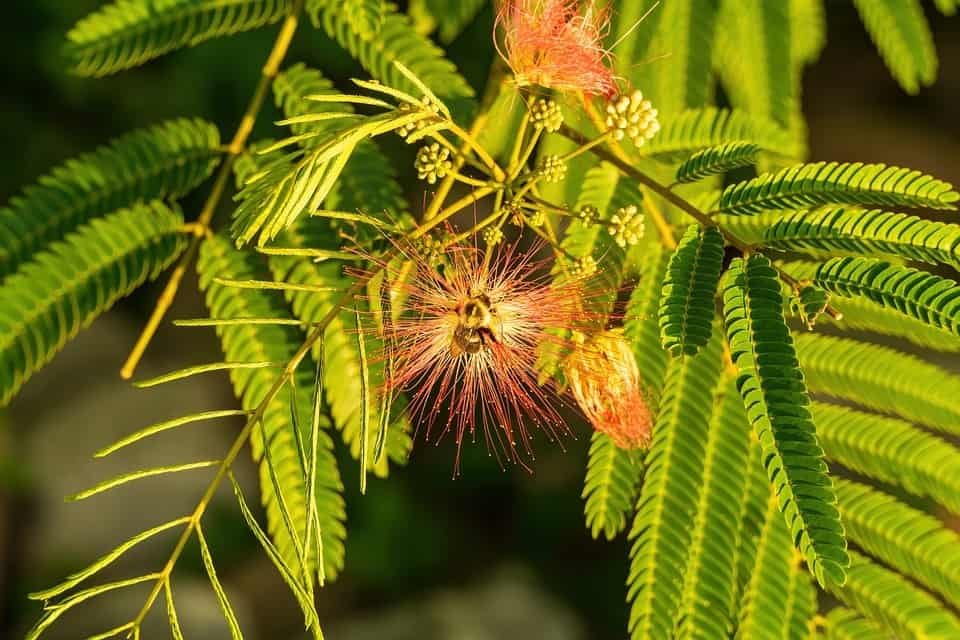Mimosa Hostilis is a perennial tree that is native to the northeastern region of Brazil and has been in the public eye for a while due to its root bark.
Tremendous Traditional and Historical Value
This plant has been around for ages and has been used for many things over the years. It is a staple of natural medicine in its native Brazil and Mexico. It’s known by several names, the most popular of which are Tepezcohuite, Jurema, Calumbi, and Carbonal.
It has a rich history as a popular entheogenic and is used today due to its many benefits, ranging from healing to cosmetic properties.
High Tannin Content
Mimosa Hostilis root bark powder has a very high tannin content, making it a very popular all-natural blood coagulant. The tannins themselves act as an astringent, a chemical that shrinks and constricts body tissues. That, in turn, stops bleeding and promotes healing and the development of new tissue.
Antifungal, Antibiotic, Antimicrobial, and Anti-inflammatory Properties
This plant’s healing properties don’t end at burns and cuts, as the plant has immense natural antibiotics and natural anti-inflammatory properties. These work alongside each other to prevent infections while promoting healing.
Additionally, Mimosa Hostilis root bark powder has excellent antifungal and antimicrobial properties, which make it very hard for infections, fungus, and harmful bacteria to settle in the wound. That’s why this plant is one of the main ingredients in a range of health products, such as skin creams for acne, herpes, eczema, and many more skin conditions and even hair loss products.
Aside from creams, Tepezcohuite is used for treating stomach illnesses, vaginitis, and fungal infections on the skin.
High Cosmetic Value
The healing and psychedelic properties of this plant aren’t the only things that make Mimosa Hostilis as accessible as it is. The plant is also one of the main ingredients in a wide range of beauty, cosmetic, and wellness products such as soaps, shampoos, lotions, and many more.
Dye Properties
Mimosa Hostilis root bark powder is used as natural medicine, the main ingredient in cosmetic products, and even has immense value as a dye, as it produces excellent shades of purples and browns. Its pigments are vibrant, which makes it a superb textile dye that provides long-lasting and consistent results.
Depending on the dye itself, the amount you use, and the method of dying – using Mimosa Hostilis root bark powder can give you different shades from light reds to rich purples, and everything in between.
Final Thoughts
This plant is one of the best natural dyes out there with some immense health benefits – and is a staple of natural medicine. Mimosa Hostilis root bark powder isn’t only an all-natural health giant, as it’s used for dyes. Purchasing the whole bark is legal, as it is not a controlled substance. Getting into this plant is easy, and once you do so, you can experience a multitude of health benefits for your body in a matter of mere hours. Happy brewing!


